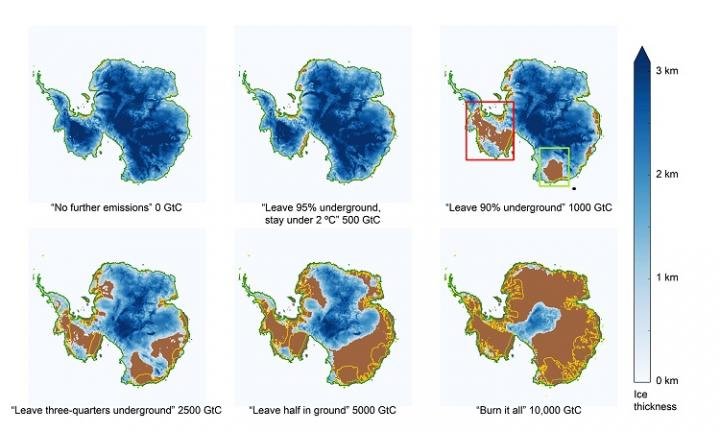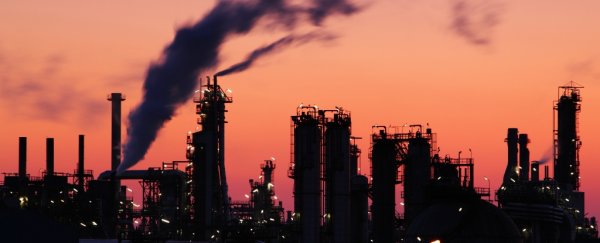Scientists have calculated what would happen if we turned our backs on renewable energy and went ahead and burnt all the remaining fossil fuel resources on Earth. The verdict is pretty bleak: the resulting warming would pretty much entirely melt Antarctica, and cause sea levels to rise by a disastrous 50 to 60 metres.
That would be enough to put most coastal cities underwater, including New York City and Washington DC. "Our findings show that if we do not want to melt Antarctica, we can't keep taking fossil fuel carbon out of the ground and just dumping it into the atmosphere as CO2 like we've been doing," one of the lead researchers, Ken Caldeira from the Carnegie Institution for Science in the US, said in a press release.
Although plenty of studies in the past have tried to predict what would happen if our climate increases 2, 5, or even 7 degrees Celsius, this is the first to model the effect on the Antarctic ice sheet given the worst case scenario - where us foolish humans burn through every last fossil fuel resource on the planet without restraint and with no regard for the consequences (sound familiar, baby boomers?).
"Most previous studies of Antarctic have focused on loss of the West Antarctic Ice Sheet," said Caldeira. "Our study demonstrates that burning coal, oil, and gas also risks loss of the much larger East Antarctic Ice Sheet."
The team's model took into account the many factors that will impact Antarctica's evolution over the next 10,000 years, and used these to try and predict not only how quickly the ice would melt, but also which areas would be affected first, taking into account interrelated variables like ocean currents, atmosphere composition, and snowfall.
The model showed that if carbon emissions continue at their current levels for the next 60 to 80 years, then the West Antarctic ice sheet will definitely become unstable (something that's already begun to happen).
The good news is that if global warming doesn't exceed 2 degrees Celsius, then Antarctic melting will only cause a few metres of manageable sea level rise. But every tenth of a degree over that increases the risk of total Antarctic ice loss.
And the reality is that current levels of carbon emissions only represent around 6 to 8 percent of the 10,000 billion tonnes of carbon that could be released if we burnt all remaining fossil fuels. So things could get a lot worse.
"The West Antarctic ice sheet may already have tipped into a state of unstoppable ice loss, whether as a result of human activity or not," said one of the team members Anders Levermann from the Postdam Institute for Climate Impact Research in Germany. "But if we want to pass on cities like Tokyo, Hong Kong, Shanghai, Calcutta, Hamburg and New York as our future heritage, we need to avoid a tipping in East Antarctica."
This destruction wouldn't happen overnight, with the predictions for the rest of this century remaining pretty much the same as previous models. But over several thousand years the model showed that sea levels could rise by around 60 metres, and Antarctica could look like the bottom right-hand image:
 Ken Caldeira and Ricarda Winkelmann
Ken Caldeira and Ricarda Winkelmann
"If we don't stop dumping our waste CO2 into the sky, land that is now home to more than a billion people will one day be underwater," said Caldeira.
The results have been published in Science Advances.
